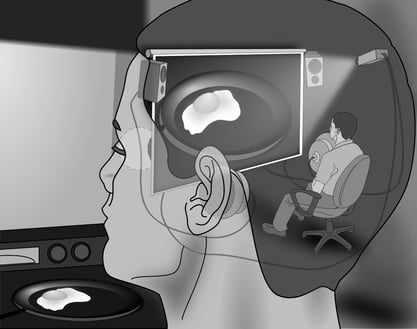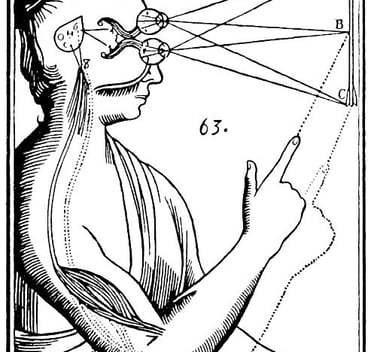4: Subjectivity and the Mech
Thinking about the subject in relation to robots, bio and other.
8/3/20246 min read
This post talks a bit more speculatively and from the gut than even the previous post, which is saying something because the prior post was itself also speculative. As such it will appear disjointed and confusing at points, but hopefully the reader will be generous with it and I will try to clarify less obvious terms and provide a few pictures for reference – along with a few other select quotes.
In broad terms this post tries to consider the themes that feed into the mecha subgenre implicitly or explicitly as it is trying to understand the substrate feeds into the basic nature of it:
What is required for it to exist?
Why does it persist, despite the strangeness?
What is it about?
How does it tie to art, and what are precursors?
As such this post talks about anxieties, the impetus for mecha, and the preconditions for the genre. In this it might be said to be a genealogy of mecha, though the poor writing and disarticulated notions make me less inclined to give it such a name.
In any event, the post generally proposes that the entire mecha subgenre is sort of a running-dog of subjectivity and that such notions have a long history of thought with many themes that keep occurring in knowing or unknown ways in art or as thematic concern: that is, the tension between mind and body and their representations contribute to the emergence of mecha as a genre with the prior nature of the human body being the loci of such things. That’s not a small statement, but the internet isn’t exactly a place of mild statements and people here have a tendency to “throw thunderbolts”, as Robespierre would say.
Let’s start with this thing called subjectivity. We need it to get the mech, or, at least to get some footing.
The picture should remind you of something: a cockpit, where one is a tiny little person inside of a machine – or, in Evangelion’s case, a biomechanical cyborg that has all the typical genre trappings of a mecha but is a bit more robust and different than its other genre compatriots. This is a primary thrust of the post: that the subjectivity of the mecha is mirrored by the subjectivity of modernity and the bodily anxieties, pains, and so on; the fact that such a view is nearly isomorphic with the pilot at the helm of a machine is revealing, but perhaps it could use some additional bulwark.
Let’s talk subjectivity. By subjectivity I mean a perspective that views the world as ‘interior’ and the eyes as showing an ‘exterior’ world. This is typically referred to in modern parlance as the cartesian theater and should be understood by the reader as how most people interpret the world, for good or ill. Does this seem familiar? Is this how you, the reader, see the world? It’s not a critique, more of an honest question. I ask the question because it’s not obvious how we all interpret life and the world – for many years and even today it is not a settled question, as Kant would say:
“However harmless idealism may be considered – although in reality it is not so – in regard to the essential ends of metaphysics, it must still remain a scandal to philosophy and to the general human reason to be obliged to assume, as an article of mere belief, the existence of things external to ourselves (from which, yet, we derive the whole material of cognition for the internal sense), and not to be able to oppose a satisfactory proof to any one who may call it in question.”[1]
This quote notwithstanding, the post does not seek to talk about idealism, merely to posit the world as we view as not immutable – it is not to establish value, preference, or so on. It is more to create a gap where we can talk about mechs, and the preconditions for their near-universal popularity.
All of this can be a little unusual to think about. It’s not something people take as evident, and to think about how one views the world isn’t something a normal person does. They might think about their life, the things in their lives, their concerns, and what is granted to them in their society – but not about their perception – but to say that ‘this’ is ‘how it is’ and ‘how it will be’ is to stand on shaky ground.
Is the world external to you, outside you?
If friend reader says yes, you are a subject and you see things in a way roughly in line with contemporary social norms and this isn’t unusual; most people work under the assumption this is simply the world. If you said no, more than likely you still believe this to some degree, and still thing that there is a ‘little you’ inside in the form of a soul, or some sort of essence inside that is piloting that flesh robot of yours around. However, as stated, this Cartesian theater is not a uniform way of seeing, and there have been times in history where people haven’t seen things in this fashion – the anthropologists and the academics have found it’s a relatively recent thing with certain works, such as the works of Walter Ong (such as Orality and Literacy) dealing in the emergence of subjectivity, the subject, and thereby the subject’s way of seeing things and the importance of quiet reading alone. The general hinge of Ong’s work and the change is quiet reading alone and how it has impacted and been associated with the emergence of the subject. Interestingly, while this view and notion of seeing might have existed prior to the emergence of such behavior.
This digression emerges because of where we are going, here. That is, the subject and the subject’s tensions in modernity: to have a subject is to have a view that creates certain problems and certain anxieties that are chronic; We might liken it to the strains experienced by a certain type of walking: to walk on the tiptoes is to cause strain. This strain then appears and becomes a common concern in society, and this common social flotsam is eventually reconditioned into now familiar forms.
But there were unfamiliar forms before, it is true. To say that many things have come before and the history of human beings has familiar sensations, feelings, and images is not a bold claim.
For instance, art. The art of alchemy is revealing. Alchemy is the precursor of chemistry, it largely an admixture of magical thinking and idiosyncratic behaviors in pursuit of seeking relief from the typical anxieties of the flesh: new life, amelioration of pain, amelioration of poverty, and all the other bodily anxieties.
The expressions of this are interesting, to say the least. They are often little person inside of a container, the homunculus, the artificial person. To reiterate: at its most basic, the little person inside a container is a mech, at least at a squint. If this sounds familiar, it is the theme of Evangelion’s substrate is very much this: the little person in the theater controls the artificial person, the mecha-cyborg, which acts as a lightning rod for anxieties and is porous – the pain external is the pain internal, much as a skin or a second flesh.
Heads figure prominently in such works, it is not clear why. It is not clear why they are severed. A little container that is the person themselves, but also a combination of projections in my view which shows up in the fashion that a footprint might; both as an inversion, but also a projection into the ground with the shape of the print saying something of the walker. The carnal act is harder to decipher, harder to understand, an act of creation, of carnality.
Electrocosmic is, to be frank, thematically artistic. We’ll interpret this as the footprint, although the methodology might strike the reader as a bit flimsy: how can one make inferences based on art, and how can one try to infer anxieties based on art over vast periods of time?
I am not sure, and I very well may be wrong. What I think, though, is that the basic anxieties are the same and that they are related to the subject and the basic issue of the mind and body; the tension between the two and the odd quality of being human and unlike other organisms – it is a finite thing with the capacities of the infinite but has trouble expressing even the barest fragment of the infinite; instead, it can only try to claw at stones with stones and pigments or use forms and symbols that strike others as true or appropriate, I suppose.
[1] https://www.marxists.org/reference/subject/ethics/kant/reason/critique-of-pure-reason.htm14






c/o Wikipedia




© Austere Patio Games, 2024. All rights reserved.

